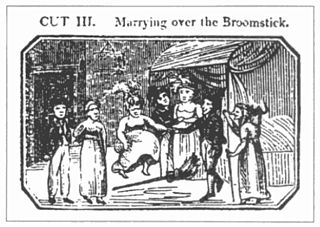
Jumping the broom is a phrase and custom relating to a wedding ceremony in which the couple jumps over a broom. It is most widespread among African Americans and Black Canadians, popularized during the 1970s by the novel and miniseries Roots, and originated in mid-19th-century antebellum slavery in the United States. The custom is also attested in Irish weddings.

An engagement or betrothal is the period of time between the declaration of acceptance of a marriage proposal and the marriage itself. During this period, a couple is said to be fiancés, betrothed,intended, affianced, engaged to be married, or simply engaged. Future brides and grooms may be called fiancée (feminine) or fiancé (masculine), the betrothed, a wife-to-be or husband-to-be, respectively. The duration of the courtship varies vastly, and is largely dependent on cultural norms or upon the agreement of the parties involved.
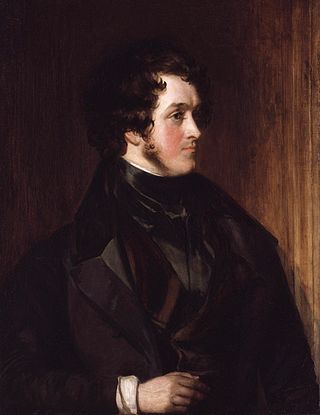
William Harrison Ainsworth was an English historical novelist born at King Street in Manchester. He trained as a lawyer, but the legal profession held no attraction for him. While completing his legal studies in London he met the publisher John Ebers, at that time manager of the King's Theatre, Haymarket. Ebers introduced Ainsworth to literary and dramatic circles, and to his daughter, who became Ainsworth's wife.

Traditionally an oath is either a statement of fact or a promise taken by a sacrality as a sign of verity. A common legal substitute for those who conscientiously object to making sacred oaths is to give an affirmation instead. Nowadays, even when there is no notion of sanctity involved, certain promises said out loud in ceremonial or juridical purpose are referred to as oaths. "To swear" is a verb used to describe the taking of an oath, to making a solemn vow.

Great Dunmow is a historic market town and civil parish in the Uttlesford district of Essex, England. It lies to the north of the A120 road, approximately midway between Bishop's Stortford and Braintree, 5 mi (8 km) east of London Stansted Airport.
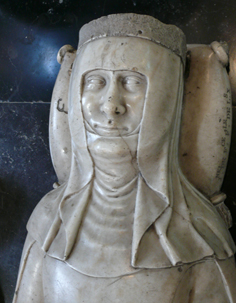
Joan II was Queen of Navarre from 1328 until her death. She was the only surviving child of Louis X of France, King of France and Navarre, and Margaret of Burgundy. Joan's paternity was dubious because her mother was involved in a scandal, but Louis X declared her his legitimate daughter before he died in 1316. However, the French lords were opposed to the idea of a female monarch and elected Louis X's brother, Philip V, king. The Navarrese noblemen also paid homage to Philip. Joan's maternal grandmother, Agnes of France, and uncle, Odo IV of Burgundy, made attempts to secure the counties of Champagne and Brie to Joan, but the French royal troops defeated her supporters. After Philip V married his daughter to Odo and granted him two counties as her dowry, Odo renounced Joan's claim to Champagne and Brie in exchange for a compensation in March 1318. Joan married Philip of Évreux, who was also a member of the French royal family.

Baynard's Castle refers to buildings on two neighbouring sites in the City of London, between where Blackfriars station and St Paul's Cathedral now stand. The first was a Norman fortification constructed by Ralph Baynard, 1st feudal baron of Little Dunmow in Essex, and was demolished by King John in 1213. The second was a medieval palace built a short distance to the south-east and later extended, but mostly destroyed in the Great Fire of London in 1666. According to Sir Walter Besant, "There was no house in [London] more interesting than this".
Divorce according to Islamic law can occur in a variety of forms, some initiated by a husband and some by a wife. The main categories of Islamic customary law are talaq, khulʿ and faskh. Historically, the rules of divorce were governed by sharia, as interpreted by traditional Islamic jurisprudence, though they differed depending on the legal school, and historical practices sometimes diverged from legal theory.
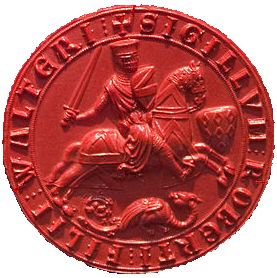
Robert Fitzwalter was one of the leaders of the baronial opposition against King John, and one of the twenty-five sureties of Magna Carta. He was feudal baron of Little Dunmow, Essex and constable of Baynard's Castle, in London, to which was annexed the hereditary office of castellan and chief knight banneret of the City of London. Part of the official aristocracy created by Henry I and Henry II, he served John in the wars in Normandy, in which he was taken prisoner by King Philip II of France and forced to pay a heavy ransom.
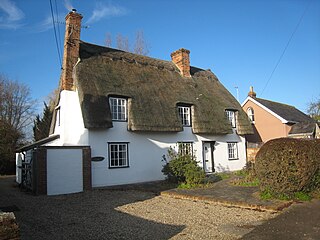
Little Dunmow is a village situated in the Uttlesford district, in rural Essex, England, in the vale of the River Chelmer about 3 miles (4.8 km) east-southeast of the town of Great Dunmow. It can be reached from the Dunmow South exit of the A120 by following the road towards Braintree (B1256) for 3.2 km before turning right for the village. The centre of the old village, which has just 99 dwellings, is a further 0.6 km along the road. The Flitch Way, a linear country park along the route of the old Braintree to Bishop's Stortford railway, links Little Dunmow and the new settlement of Flitch Green. The new village, built on the site of a former sugar beet factory, is a self-contained community of 850 dwellings and is another kilometre along the road towards Felsted.

Robert FitzWalter, 1st Baron FitzWalter was an English landowner, soldier, administrator and politician.
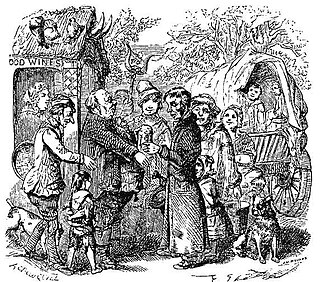
Swearing on the Horns is a farcical oath that was traditionally given to visitors at various pubs in the north London suburb of Highgate during the 17th, 18th and 19th centuries. The oath consists of a series of statements read by a clerk, confirming one's dedication to merriment and debauchery; those being sworn in would agree to each statement, kiss or salute a set of horns, and be entered in a logbook for posterity.

Heitstrenging (pl. heitstrengingar) is an Old Norse term referring to the swearing of a solemn oath to perform a future action. They were often performed at Yule and other large social events, where they played a role in establishing and maintaining good relationships principally between members of the aristocratic warrior elite. The oath-swearing practice varied significantly, sometimes involving ritualised drinking or placing hands on a holy pig that could later be sacrificed. While originally containing heathen religious components such as prayers and worship of gods such as Freyr and Thor, the practice continued in an altered manner after the Christianisation of Scandinavia.

Wychnor Hall is Grade II Listed early 18th-century country house near Burton on Trent, Staffordshire, formerly owned by the Levett Family. The hall has been converted to a Country Club.
Stephanie of Armenia, also known as Rita, was a member of the Rubenid dynasty and claimant to the throne of the Armenian Kingdom of Cilicia.

Made in Heaven is a 1952 British Technicolor comedy film directed by John Paddy Carstairs which stars David Tomlinson, Petula Clark and Sonja Ziemann. The screenplay was based on a story by William Douglas-Home. It was shot at Pinewood Studios outside London. The film's sets were designed by the art director Maurice Carter.

The Custom of Paris was one of France's regional custumals of civil law. It was the law of the land in Paris and the surrounding region in the 16th–18th centuries and was applied to French overseas colonies, including New France. First written in 1507 and revised in 1580 and 1605, the Custom of Paris was a compilation and systematization of Renaissance-era customary law. Divided into 16 sections, it contained 362 articles concerning family and inheritance, property, and debt recovery. It was the main source of law in New France from the earliest settlement, but other provincial customs were sometimes invoked in the early period.
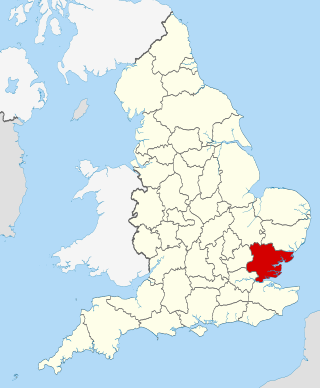
Essex is a ceremonial county in the East of England, and one of the home counties. It is bordered by Cambridgeshire and Suffolk to the north, the North Sea to the east, Kent across the Thames Estuary to the south, Greater London to the south-west, and Hertfordshire to the west. The largest settlement is Southend-on-Sea, and the county town is Chelmsford.
David Ogborne was an English artist. He depicted local events and curiosities in his home county Essex.

The Flitch of Bacon is an 1854 historical novel by the British writer William Harrison Ainsworth. It was originally serialised in The New Monthly Magazine. He based it on the tradition of the Flitch of Bacon at Little Dunmow in Essex, awarded to the happiest married couple. It inspired a revival of the practice, with Ainsworth judging a competition the following year.

























